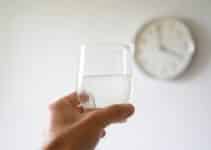A research group in the United States has developed a process to recover lead in its metallic form so that it can be reused in the PV industry. The process relies on a leaching solution based on a combination of acetic acid (CH3COOH) and hydrogen peroxide (H2O2), which the researchers said leaches the lead ‘in a matter of minutes.’
 in photovoltaic modules at the end of their life cycle.</p><p>“No recyclers talk about lead recovery because it does not generate much revenue but adds to the cost of recycling,” the research’s corresponding author, Meng Tao, told <strong>pv magazine</strong>. “In the long run it is a liability for recyclers as it is toxic and will sooner or later leach out from PV panels. We are considering lead recovery as part of the overall recycling process we are developing.”</p><p>The process utilizes a leaching solution based on a combination of acetic acid (CH3COOH) and hydrogen peroxide (H2O2), which the researchers said works as an efficient leaching agent for Pb “in a matter of minutes.” They specified that each solar cell used in PV panels contains, on average, about 0.2 grams of Pb.</p><p>The metal is recovered by dissolving it in the leaching solution. After leaching, the resulting Pb powders are rinsed and dried on highly absorbent paper to minimize the formation of lead acetate compounds, which the team said introduce errors during weight measurements. “It is preferred to recover it in the metallic form so it can be sold back to the solar industry for new solder,” the US group said.</p><p>The process’ second step is <span lang=)
“These high recovery rates were determined using Inductively Coupled Plasma Optical Emission Spectroscopy (ICP-OES) for the post-electrowinning leachates,” they explained. “The 0% CH3COOH solution has the lowest Pb recovery rates for each potential applied, suggesting that CH3COOH aids in Pb electrowinning.”
The scientists noted that the total Pb amount in the solution is approximately 16 mg or 0.05% of the total powder mass. Assuming that 0.2% of the silicon cell’s weight is represented by Pb, the total Pb amount in the 1.3 g of silicon cells should be 26 mg, they stated.
The technique is described in full in the study “Lead leaching and electrowinning in acetic acid for solar module recycling,” published in Solar Energy Materials and Solar Cells. “Overall, the leaching and electrowinning process using CH3COOH shows promise as a feasible and safer approach for Pb recovery from silicon solar modules,” the academics concluded.
This content is protected by copyright and may not be reused. If you want to cooperate with us and would like to reuse some of our content, please contact: [email protected].


